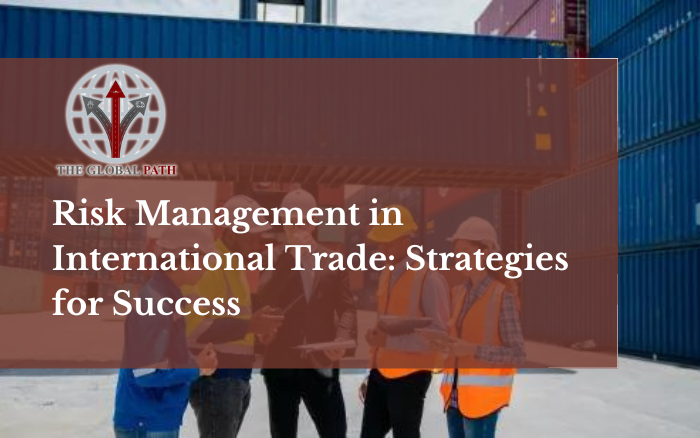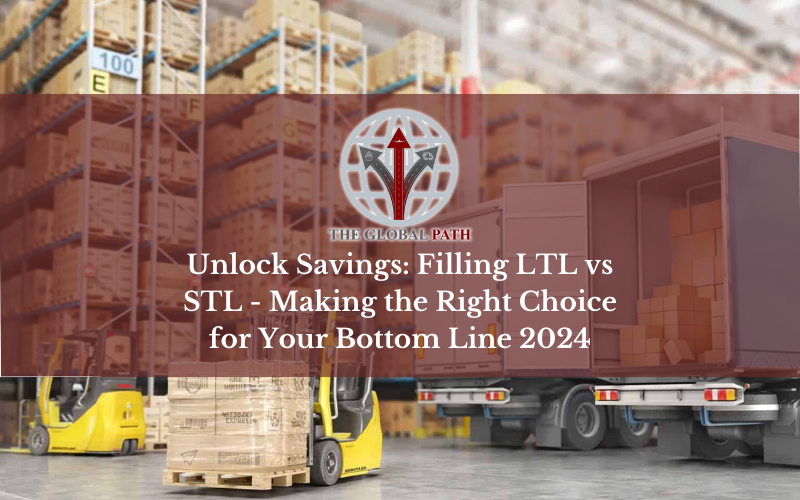In the global economy of today’s interconnected world, international trade is crucial. Businesses face various risks associated with compliance, regulations, and market uncertainties when they expand their operations internationally. Successful international trade endeavors are required to understand these risks and apply effective risk mitigation strategies. In this article we will look at different strategies that can be utilized to reduce risks associated with international trade and compliance, resulting in more efficient and profitable operations.
What is Trade Risk?
Trade risk is the possibility of suffering a loss of money or other unfavorable effects as a result of changes in the price of goods or services that are exchanged between nations.
Trade risk is a crucial factor to take into account for companies engaged in international trade since it can affect their financial stability and profitability. Trade risk can be influenced by variables such as fluctuations in currency rates, unstable political environments, modifications to regulations, and natural disasters. In order to reduce the possible impact of these risks on their operations, businesses must effectively manage them. If this isn’t done, there could be serious financial losses, harm to the company’s reputation, and other consequences.
Factors Affecting Trade Risk:
Trade risk is influenced by several factors, including but not limited to:
Currency Rates. Currency exchange rate fluctuations can have an impact on the value of goods and services that are traded between nations. For instance, if an American business exports goods to Japan and the yen rates fluctuate compared to the US dollar, the US business will get paid less for its goods, reducing its earnings.
Political instability: Trade and investment can be negatively impacted by political instability, which includes terrorism, civil unrest, and governmental changes. In addition to making it difficult for companies to operate in the impacted nations, political unrest can cause supply chain disruptions, which can cost money.
Amendments to regulations: Trade can be greatly impacted by amendments to regulations, such as the imposition of new tariffs or trade restrictions. Such changes may raise the barriers to entry or increase the cost of conducting business in international markets for companies.
Natural disasters: Events like hurricanes, floods, and earthquakes can have an effect on transportation networks, infrastructure, and supply chains. Trade risk may arise from these disruptions, which may result in delays in the delivery of goods or higher transportation costs.
How can Trade Risk Affect Your Business?
The revenue and economic health of companies engaged in international trade can be significantly impacted by trade risk in a number of ways:
Decreased revenue: Exchange rate fluctuations may increase the cost of goods import or export for companies, resulting in a drop in revenue. Businesses that have fixed agreements with suppliers or customers may find it difficult to pass on rising costs to their clients as a result of this.
Cost increases: Trade risk can raise operating expenses by bringing about delays in the supply chain, higher tariffs or taxes, or both. Financial stability and profitability may be negatively impacted by these rising expenses.
Reputation damage: If trade risk causes delays or disruptions in the delivery of products or services, it can harm a company’s reputation. Profitability may be further impacted by a loss of clients and market share as a result.
Uncertainty: Businesses that are exposed to trade risk may find it difficult to plan ahead and make wise investments. Financial stability may be further impacted by this uncertainty, which can make it difficult to attract investors or secure financing.
All things considered, trade risk can significantly affect the financial stability and profitability of companies engaged in international trade. It is imperative for businesses to manage trade risk effectively in order to maintain their competitiveness in the global economy.
And I’m sure every trader wants to avoid these negative impacts of trade risk. Here are few strategies that can be employed to reduce financial risk:
Perform Careful Market Research:
Businesses should conduct thorough market research before engaging in international trade. Cultural differences, legal frameworks, market demands, and competitors should all be included in this research. The target market’s needs and preferences should be understood to create an appropriate risk mitigation strategy.
Collaborate with Trustworthy Local Agents:
While navigating overseas markets can be difficult, working with local agents can offer tremendous assistance. Local representatives are familiar with the laws, norms, and business practices of the area. They can support with compliance issues and aid in the identification of possible risks.
Diversify Your Suppliers and Customers:
Businesses run a great risk when they depend solely on one supplier or client. Businesses can mitigate the effects of market disruptions and maintain a stable supply chain by expanding their customer base and supplier base geographically.
Make Sure the Contracts Are Clear and Compliant:
Successful international trade is largely dependent on well-drafted contracts. All parties’ terms, obligations, and responsibilities should be spelt out in detail in contracts. It is crucial to make sure local laws and rules governing international trade are followed.
Adopt Appropriate Record-Keeping and Documentation
Accurate and well-organized documentation is essential for compliance with international trade regulations. Keeping thorough records of all agreements, shipments, and transactions can help with compliance adherence, audits, and dispute resolution.
Keep Up with Trade Regulations:
Changes to international trade regulations occur frequently. To avoid infractions and penalties, businesses need to stay informed about the most recent developments in regulations. Regularly speaking with legal professionals can give important information about compliance-related issues.
Regularly Conduct Risk Assessments:
Regular risk assessments aid in the identification of novel and developing hazards. Businesses should create a methodical strategy to assess possible risks and assess how well their risk-reduction tactics are working.
Invest in Automation and Technology:
Improving efficiency and lowering human error rates can be achieved by incorporating automation and cutting-edge technologies into international trade operations. Processes can be streamlined and compliance adherence increased with automated systems.
Employee Compliance Training:
It is crucial to teach staff members about rules governing international trade and compliance procedures. Knowledgeable employees are able to identify possible hazards and take the necessary precautions to guarantee compliance.
Keep an Eye on Currency Fluctuations:
Keep an eye on currency fluctuations because they can have a big impact on the profits from international trade. To reduce currency-related risks, businesses should carefully monitor exchange rates and put hedging strategies into place.
Create Backup Plans:
Even with careful preparation, unanticipated things still happen. Companies need to create backup plans in case of emergencies or other disruptions so that trade operations are not negatively impacted.
Keep Up Good Relationships with Stakeholders:
Smoother trade operations can result from effective communication and cooperation with stakeholders, such as suppliers, customers, and regulatory bodies. Having solid relationships promotes trust and facilitates quick problem-solving.
Keep an eye on geopolitical risks:
These variables have a big impact on global trade. Making educated decisions and developing risk-reduction plans can be facilitated by having knowledge of the geopolitical risks present in various areas.
Review Insurance Coverage Frequently:
An essential safety net for global trade is comprehensive insurance coverage. Companies should periodically check their insurance policies to make sure they sufficiently address any risks.
Encourage a Culture of Compliance:
It’s critical to encourage a culture of compliance within the company. It is imperative that employees comprehend the significance of complying with regulations and are motivated to report any possible instances of noncompliance.
Planning for Risk Response
Companies need to choose the right responses based on their goals and risk tolerance. The four main strategic approaches to risk response are acceptance, transfer, mitigation, and avoidance.
Taking proactive steps to completely eliminate or avoid a risk is known as risk avoidance.
The goal of risk mitigation or reduction is to lessen the likelihood or impact of a risk.
Transfer, which includes acquiring insurance policies from reliable insurance providers, entails transferring the possible consequences of a risk to a third party.
Acknowledging a risk’s existence without actively addressing it is known as risk acceptance or retention, and it is frequently applied to common risks.
Customizing strategies based on the nature, severity, and types of risks identified (internal vs. external), as well as other risk factors, is necessary to create a comprehensive risk response plan.
The most effective risk management plans are those that are in line with the organization’s risk management goals. This way, even when faced with new risks, backup plans will always be in line with the organization’s overarching objectives and strategies.
Conclusion:
To put it briefly, trade risk is the possibility of suffering a financial loss or other unfavourable outcome as a result of changes in the value of goods or services that are traded between nations. International trade exposes businesses to various trade risks, such as fluctuations in currency rates, unstable political environments, shifting regulatory landscapes, and natural disasters. Ineffective risk management can result in lower profits, higher expenses, reputational harm, and uncertainty.
Maintaining compliance and discovering the intricacies of global trade calls for a very calculated approach and acute risk awareness. Only businesses that can effectively calculate risks by conducting in-depth research, forming reliable partnerships, adhering to regulations, and promoting a culture of compliance can survive in such a fast-paced environment. In the fast-paced realm of global trade, long-term success will depend on embracing technology and remaining flexible in the face of shifting conditions.










